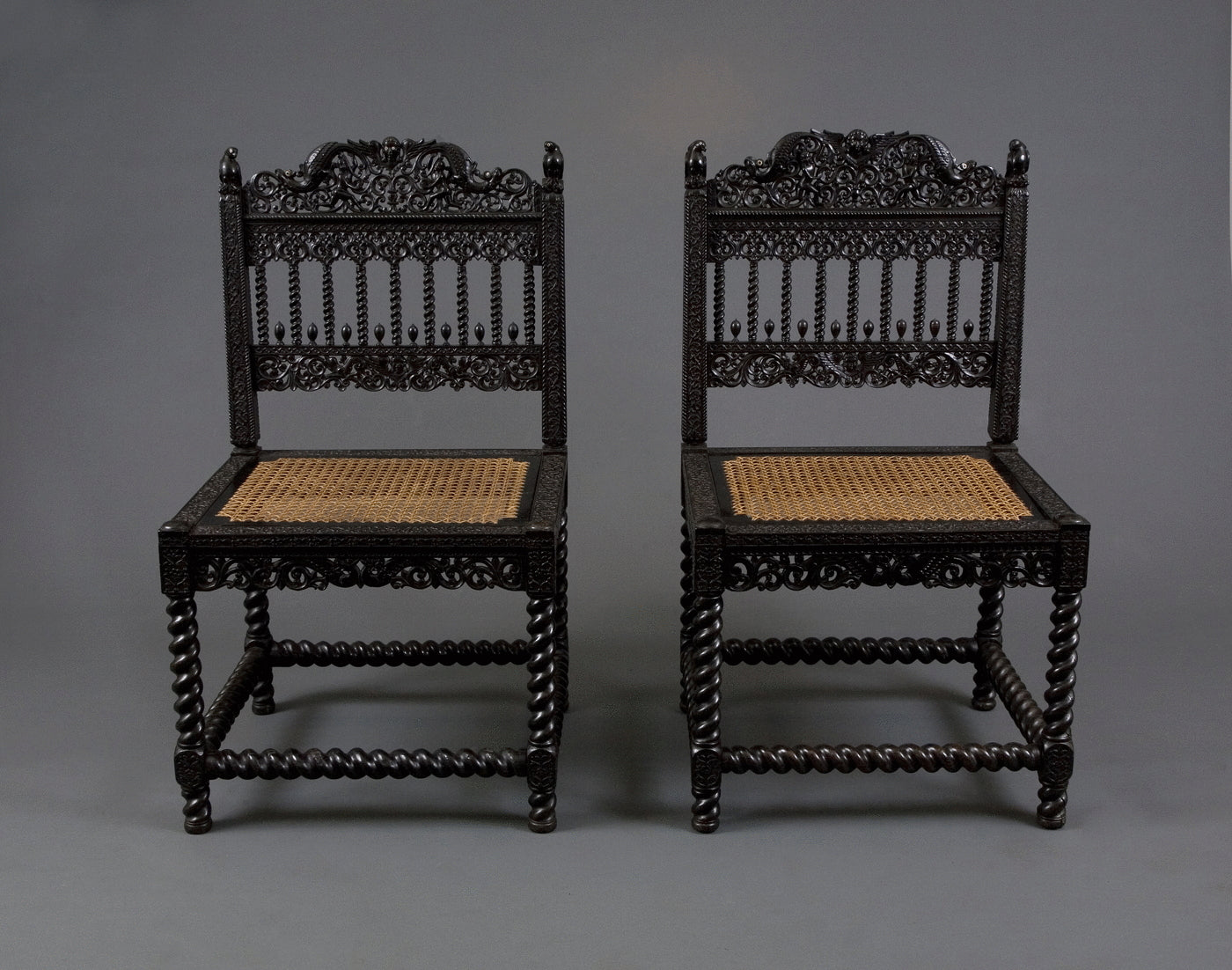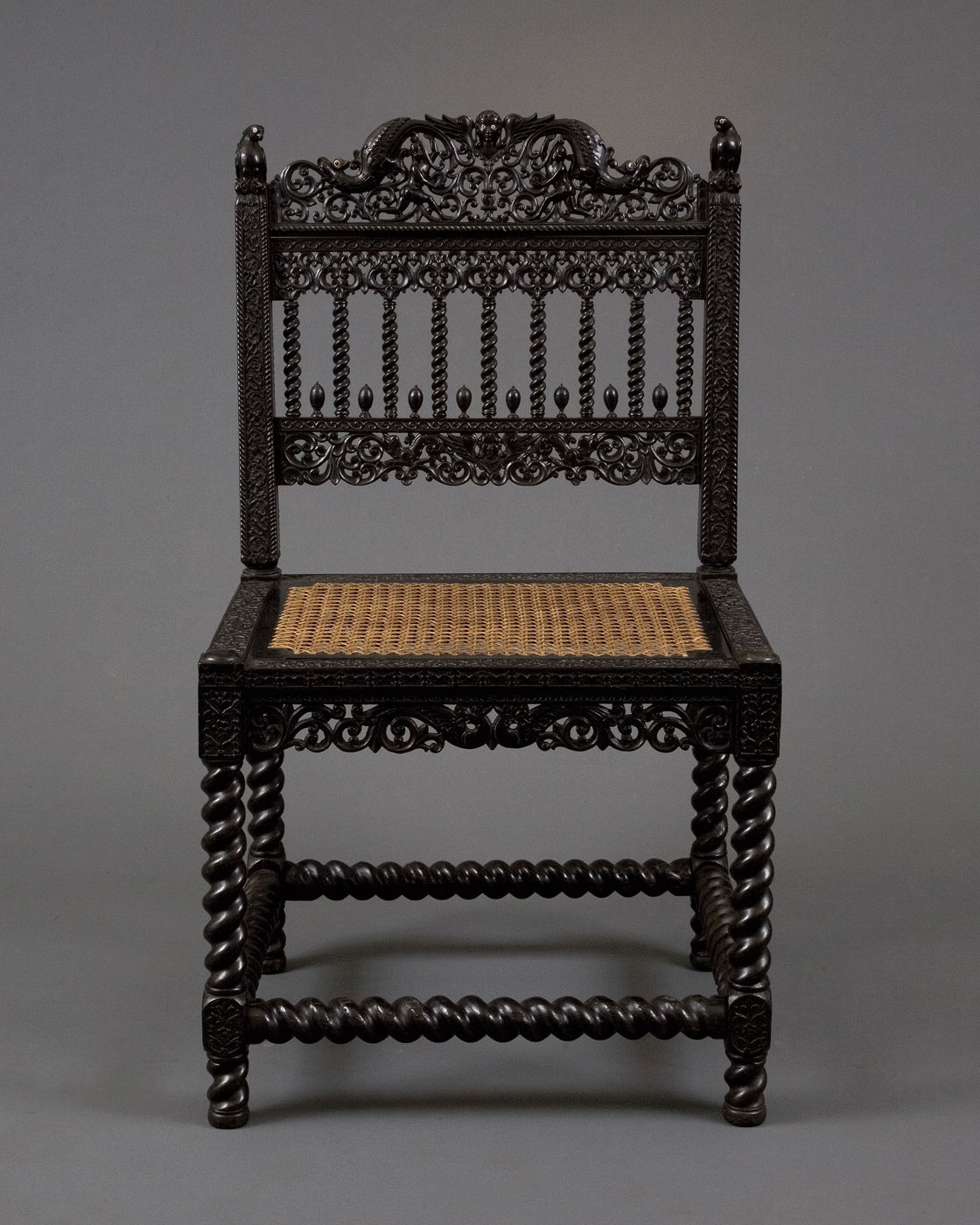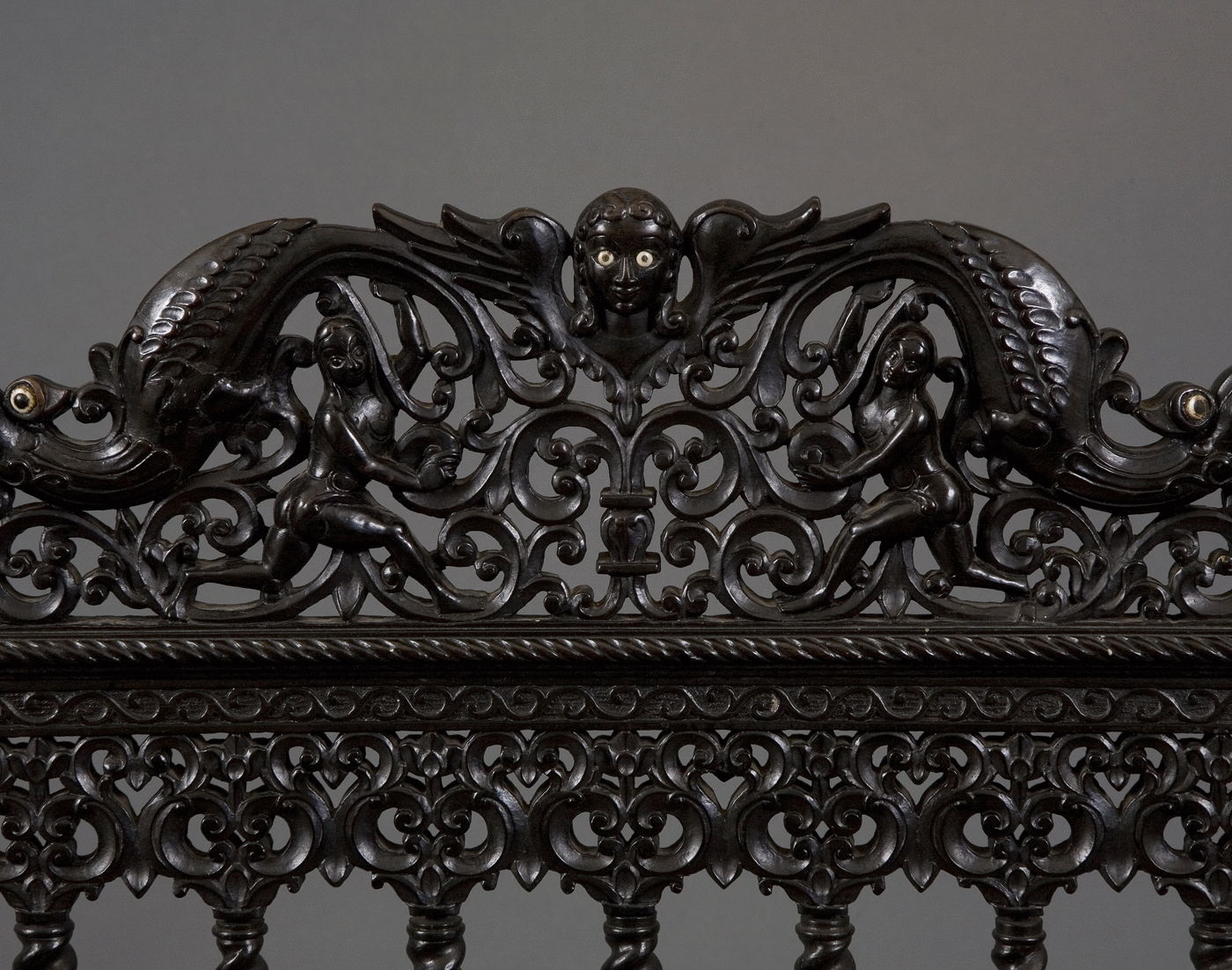1. A Pair Of Museum Quality Carved Ebony Chairs
SOLD
India | c. 1660
A PAIR OF MUSEUM QUALITY CARVED EBONY CHAIRS
Coromandel Coast, Southern India
Circa 1660-80
Height: 38 ½” (98cm)
Width: 21 ¾” (55cm)
Seat Height: 18 ½” (47cm)
The chairs carved from solid ebony, the open, pierced backs intricately carved, the top rails centred by a winged female head with ivory eyes flanked by sinuous makara
( mythical sea beasts ), also with ivory eyes, with two nude female figures below amidst scrolling branches, the rail itself rope-carved with pierced gothic traceries below and a series of rope-twist column uprights between it and the lower back rail, interspersed with ovoid finials along the lower rail, the pierced frieze beneath carved in lower relief, centred by a winged female mask flanked by makara and surrounded by scrolling leafy branches, the rear side of the back similarly carved in slightly lower relief, the profusely carved uprights with perching bird finials, the birds with ivory eyes and looking inwards, the seat frame carved, with a caned drop-in seat, the frieze below the seat rails pierced and carved to all sides with opposing makara, the blocks at the tops of the legs and between the stretchers all with carved panels, the legs and stretchers boldly rope-twist carved, on flattened bun feet.
This form of carved ebony chair from the Coromandel Coast shows the distinct influence of mid-seventeenth century Dutch furniture in the characteristic rope-twist turnings. These chairs are of a type that was familiar in England, long before the nineteenth century when the fashion for ebony resulted in ebony furniture being imported from Ceylon. There is a strong case therefore that these intricately carved ebony chairs emanated from a region of the Coromandel Coast under English influence, and one frequented by English ships.
Provenance;
There are two documented groups of exactly this type of chair in England, firstly two dozen recorded in the Longleat inventory of 1740 ( twelve of which are now in the J.P. Getty Museum), secondly at Old Montagu House, London in 1746 ( now at Boughton House ). Ebony chairs of this form from Horace Walpole’s villa at Strawberry Hill were formerly at Knowsley, the seat of the Earl of Derby, and Eaton Hall, the seat of the Duke of Westminster. There is also a pair in the Peabody Museum.
For some 150 years from 1750 this group of chairs were thought to be English from the reign of Henry VIII. In 1748 Horace Walpole saw carved ebony chairs at Esher Place and wrongly believed them to have been the property of Cardinal Wolsey who had lived there in 1519. This incorrect assumption, together with his awareness of the existence of ebony furniture in other great houses of the early period, and the use of ‘pre-classical’ ornament and black wood, caused him to wrongly believe that these chairs were English and of great antiquity, “All made by the Hallett of 200 years ago”.
When the English first settled in India there was no indigenous tradition of furniture making for use at chair height as Indians were accustomed to sitting at floor level. Contemporary paintings suggest that most of those early settlers became accustomed to Indian culture and lived on the floor. However, the Dutch had established small pockets of cabinetmaking along the Coromandel Coast before the British arrived which would explain the probable Dutch influence in the design of these chairs.
One can only speculate that Directors of the East India Company, who returned home having made substantial fortunes, brought with them this expensive ebony furniture. This could explain the existence of large groups in the great English country houses as recorded by Walpole.
The exquisite carving on this pair of chairs is so perfectly balanced and refined in its ornament that one is challenged to find its equal in any other culture. No serious collection of Anglo-Indian furniture can be considered complete without an example of this chair.
The history of ebony furniture from the Coromandel Coast is discussed in great detail in Dr. Amin Jaffer’s book, Furniture from British India and Ceylon, pp.130-142, with
this exact model of chair referred to and illustrated, pp.135-137.
Collections: Archive
Share:




